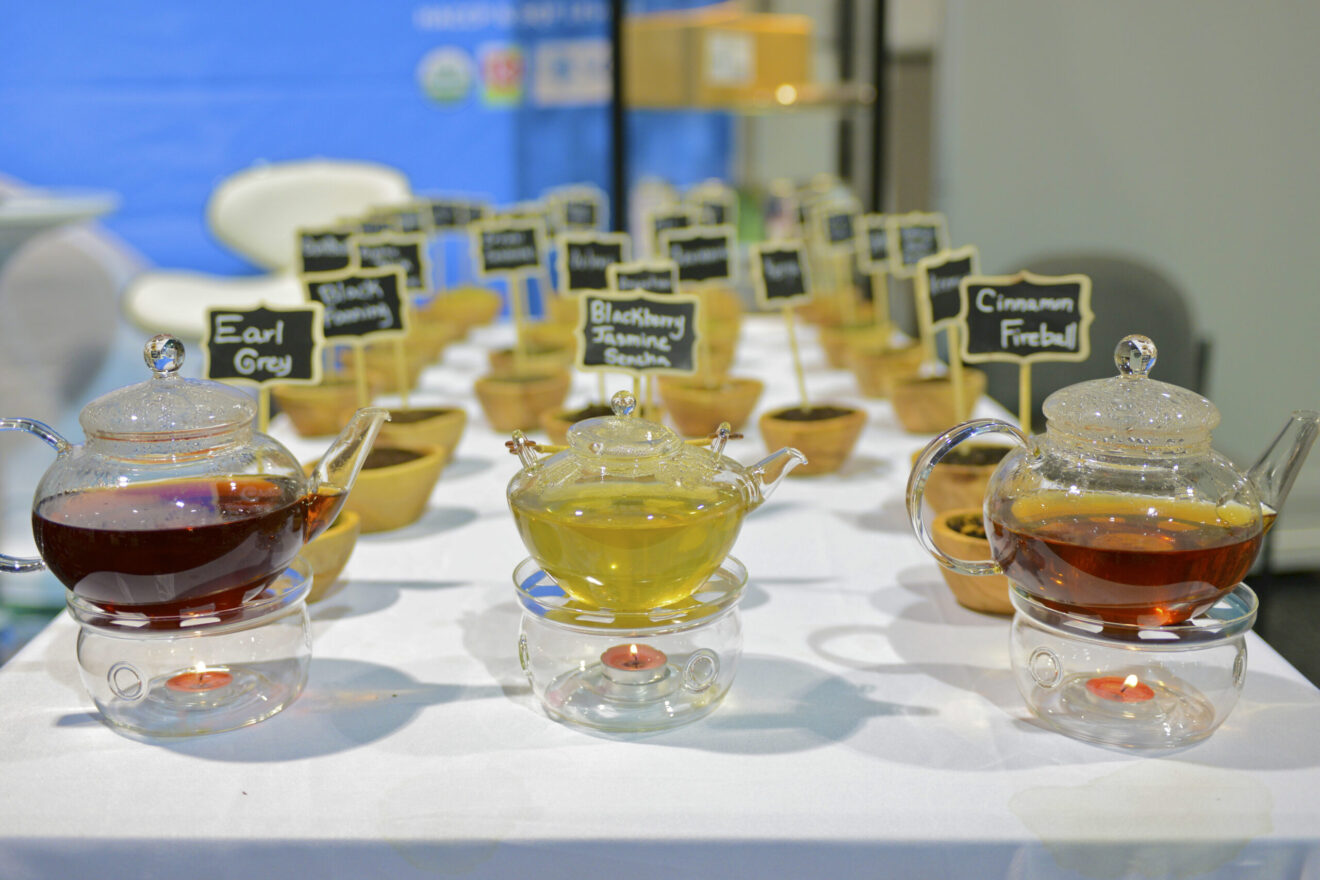New and unique tea varieties are entering the market, and the worldwide tea category is expected to hit over $21 billion within the next seven years, MarketWatch data indicates. As the tea movement continues to grow, companies are innovating their tea offerings in both ready-to-drink and foodservice.
Tea rooms are popping up all over the US, new flavors like matcha are becoming trendy and events like the World Tea Expo, taking place this June, are celebrating the contributors to the category. “It is a fascinating time in North America for all things tea,” said Brian Keating, founder of tea consultancy Sage Group and an advisory board member of the World Tea Expo.
“With the increasingly global availability of premium teas and with the advent of innovative teaware designs geared toward making whole leaf teas easier to steep at home, in the office and on-the-go, western consumers can now enjoy a closer connection than ever before to the origin of the tea leaf,” adds Maria Uspenski, CEO of The Tea Spot, author of the new book, Cancer Hates Tea and a World Tea Expo exhibitor.
Wellness, flavors could be driving popularity
Tea’s wellness qualities are among the factors driving the tea movement. “Many Americans are increasingly reaching for tea on a daily basis based on positive media reports specific to science-based research tied to improved wellness from tea consumption,” Keating said.
Consumers have long associated tea with health and wellness, but as other beverages have fallen out of favor due to their high sugar content, tea has taken the spotlight, said Rona Tison, senior vice president of corporate relations at ITO EN (North America) INC. and a World Tea Expo advisory board member. “At the same time, consumers are expanding their knowledge and appreciation of tea and discovering the many varietals and taste profiles of specialty and artisanal teas,” Tison said.
Millennials lead the charge
While Baby Boomers used to be the biggest tea consumers, that’s changing today, as more millennials are embracing tea. “Some of this is due to the health attributes associated with tea consumption, while much of it is the enjoyment of diverse styles and types of tea now available,” Keating said.
Millennials’ sense of adventurousness, as well as their commitment to the environment, are also drivers of their interest in tea, Tison said. “From steeping a full leaf oolong in a traditional Gaiwan teacup to enjoying a ready-to-drink matcha shot on the go, millennials are adventurous and exploring the expansive world of tea. Sustainability and origins are important to this demographic.” At the same time, she says, Boomers are continuing to incorporate tea into their daily rituals, thanks to the drink’s many health attributes, including anti-aging properties, cardiovascular health and maintaining a healthy weight.
In addition, the interest in tea is equally strong between men and women, Uspenski said. “The United States is still very strongly ‘coffee country,’ but we’re seeing an increasing shift toward tea across all demographics: Men, women, young and old.”
Functional ingredients lead latest trends
Because tea is so versatile, there is more than one trend driving its popularity, one of which involves the ingredients in the beverage. “The trend toward functional ingredients in tea blends is exploding right now,” Uspenski said. “I feel the surge of this wave dovetailed immediately following the spike in green tea, and particularly matcha a few years ago. This trend won’t be going away anytime soon, because the awareness and perception of tea as a healthy beverage is what still drives many new consumers its way.”
Cold Brew bottled teas make up another innovation, as does packaging, Tison said. “With the popularity of tea, there has been a growing demand in the foodservice channels for premium teas that are in convenient consumer packaging — more specifically, single-serve bottles,” she said.
Foodservice providers can make their teas stand out by providing unique presentations for the beverage, Uspenski said. “Leading-edge cafes, restaurants, spas and hotels are taking note of this trend and coming up with many creative ways to offer this to their customers. This can be as straightforward as showing off a premium tea sachet infusing in a glass teapot or mug, or a glass carafe of cold-brewing tea leaves for iced tea.”
What’s ahead?
As tea continues to find its way into more consumers’ cups, it’s clear that the tea renaissance will stay on track, and innovations will keep making their way into the industry.
“While coffee will inevitably remain the go-to morning beverage choice for many consumers, tea is amassing millions of new fans who appreciate its gentle lift in the afternoon and the mellow relaxation afforded by herbal teas at night,” Keating said. “A stream of new brewing devices and service accoutrements is further catalyzing the wave of tea, inspiring Americans to partake of tea on a daily basis.”
In addition, demand for convenient tea brewing systems, both for home use and in foodservice, is likely to rise, Tison said. “With water temperatures being key to a good cup of tea, making the preparation easy is imperative,” she said. “The main trend is that there will be more accessibility in all channels of business. Whether at a fine dining restaurant or at a convenience store gas station, good quality teas will certainly be available for the growing demographic of tea drinkers.”
_________________________________________________
If you enjoyed this article, join SmartBrief’s email list for more stories about the food and beverage industry. We offer 20 newsletters covering the industry from restaurants to food manufacturing.
